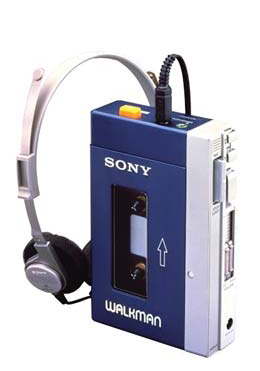Want to Subscribe?
Read Corporate India and add to your Business Intelligence

![]() Unlock Unlimited Access
Unlock Unlimited Access

Published: Aug 29, 2019
Updated: Aug 29, 2019

Organizations need to adopt competitive strategies for their existence and for maintaining their position in the market. When it comes to adopting a competitive strategy, organizations need to consider what factors separate them from their competitors. Research firm Dun & Bradstreet suggests evaluating the competitive advantages in business process, expertise, uniqueness or relationships an organization enjoys with its suppliers, customers and marketing channels before adopting any strategy.
Competitive strategies can be divided into offensive and defensive strategies. Companies pursuing offensive strategies directly target competitors from whom they want to capture marketshare. In contrast, defensive strategies are used to discourage or turn back an offensive strategy on the part of the competitor.
Offensive strategy: An offensive competitive strategy is a type of corporate strategy that consists of actively trying to pursue changes within the industry. Companies that go on the offensive generally invest heavily in research and development (R&D) and technology in an effort to stay ahead of the competition. Offensive strategies directly target competitors from whom they want to capture marketshare. Some of the offensive strategies are as follows:
Frontal attack: A frontal attack is attacking a competitor head-on by producing similar products with similar quality and price; it is highly risky unless the attacker has a clear advantage. The most prominent example is the war between Pepsi & Coca Cola. Both are cash-rich. Since ages they have use a frontal attack strategy against each other. Both are market leaders in the beverage market. When Pepsi introduced Diet Pepsi, Coke introduced Diet Coke.
Flank attack: The flank attack is the marketing strategy adopted by the challenger firm and is intended to attack the weak points or blind spots of the competitor, especially when the competitor enjoys a leadership position in the market. LG outflanked the other coloured TV producers in India by launching a rural-specific colour TV ‘Sampoorna’, thereby becoming the first one to tap the rural areas. LG demonstrated that rural customers are not just price-conscious but are actually value-conscious and are ready to pay a reasonable premium for such a product.
Encirclement attack: This form of market challenger strategy is used when the competitor attacks another on the basis of strengths as well as weaknesses and does not leave any stone unturned to overthrow the competition. The current ecommerce scenario is the best example of the encirclement attack wherein e-commerce companies are ready to go negative in their margins to beat a competitor on a turnover basis. They want to come out on top and gain the maximum number of customers by hook or crook.

Bypass attack: This type of strategy is found in a firm which has the brains to innovate. And when it innovates, it bypasses the complete competition and creates a segment of its own. Of course, other competitors soon follow. But the attack is very useful in the long term to create a brand reputation and gain customers. Sony Corp. cofounder Masaru Ibuka, who liked to listen to music during his frequent business trips, was tired of carrying his bulky TC-D5 cassette deck around. He asked his designers to create something smaller. They came back with the headphone- equipped TPS-L2. It looked sleek and striking, and they showed it to chairman Akio Morita. "Try this," Ibuka said. "Don't you think a stereo cassette player that you can listen to while walking around is a good idea?" On July 1, 1979, the sleek little device hit the market, priced at $150. Sony called it the 'Soundabout', and then changed the name to 'Walkman'. The Walkman became such a craze that consumers wound up buying 400 million of them. Today, with half of Smartphone owners using their devices to listen to music, it's easy to forget how radically the Walkman changed things. Another example of a bypass attack is the I-phone and the I-Pod.

Guerrilla marketing: Making small but useful changes, which repeatedly puts a brand in the forefront, and slowly but surely makes it a huge name in the market, is the crux of guerrilla marketing. A small brand, which wants to take on huge competitors, first becomes famous in a local market and then introduces price discounts and trade discounts. Guerrilla marketing campaigns are highly targeted in terms of the location where they are launched.
Guerilla marketing is a way of marketing which allows brand differentiation concerning the competition. In fact, right guerrilla marketing actions are usually activities remembered by the people who have witnessed it. One of the usual places to create guerrilla marketing actions is the zebra crossings. The lines painted on the ground give you a lot to play with if you have the necessary creativity. For example, McDonald's simulates the lines on the French fries in the typical package of the hamburger brand. What is interesting about this action is that, besides being part of a real zebra crossing, which still has the same function, it has made it an image of one of the company's products.
Defensive strategy: Defensive strategy is defined as a marketing tool that helps companies retain valuable customers who can be taken away by competitors. When rivalry exists, each company must protect its brand, growth expectations and profitability to maintain a competitive advantage and adequate reputation among other brands. To reduce the risk of financial loss, firms strive to take their competition away from the industry. The following are some regularly used defensive strategies by firms:
Retrenchment: It consists of the reduction of expenses via employee layoffs to increase profitability. This forces employees to manufacture the company's products with limited resources or with cheaper raw material. For example, HSBC laid off 200 employees in Pune recently. In 2009, Starbucks closed down 600 units in the United States and 61 in Australia. Another example is Tech Mahindra and IBM in India, who went on a retrenchment drive in the past two years.

Divest: This is when a company sells some of its assets to accomplish a certain objective, such as higher returns or reduces debts. Usually, companies that implement this strategy want to invest that capital to create higher future revenue. This strategy has helped some organizations get more focused on their core business and improve their performance in the market. It is common that enterprises sell their poor assets or divisions.
For example, in 2009 the ailing Lehman Brothers Holdings divested its venture-capital division. In December 2009, L&T sold its 17% stake in Bangalore International Airport Ltd (BIAL) to GVK Power and Infrastructure Ltd. (GVKPIL) for Rs. 686 crore -- part of the assets were sold to generate enough cash to pay its debts. L&T also wants to sell its holding in the Dhamra Port in Odisha to Adani Ports.
Liquidation: Liquidation is the hardest strategy to perform by a company because it means that it went into bankruptcy. This can be caused because the operation and administration of the firm was not appropriate or the managers were not trained enough to control the activities of the firm. In this case, the unique solution is to sell all the company's assets in small parts to shareholders, stakeholders or other companies that are economically solvent. Although this is a tough decision, it is better to stop the operational chaos instead of continuing losing more money. The National Company Law Tribunal (NCLT) has ordered liquidation of two Rotomac group companies whose promoter Vikram Kothari is accused of being involved in a banking fraud. The order was pronounced at the NCLT's Allahabad chapter in 2016. But, as of October 1, 2019, there are no buyers.
- Dr Vidya Hattangadi is a renowned management thinker

February 15, 2025 - First Issue

Industry Review

Want to Subscribe?
Read Corporate India and add to your Business Intelligence

![]() Unlock Unlimited Access
Unlock Unlimited Access
Lighter Vein

Popular Stories
Archives
